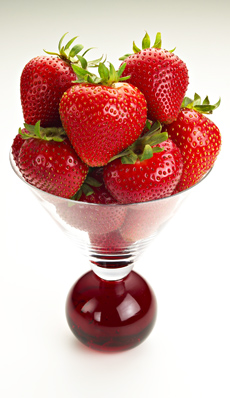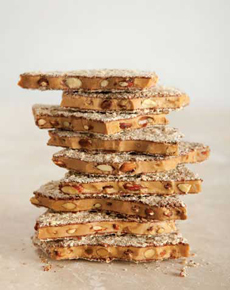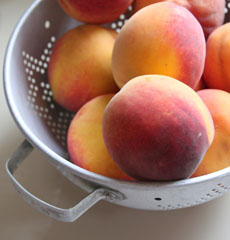|
Holiday season is high-calorie season. But you can help your calorie-stressed guests.
In addition to serving crudités as an option to the seductive Brie Torte, provide fresh fruit for guests who are watching calories or carbs, don’t eat refined sugar or are doing their best to avoid plunging into your brownies and butter cookies.
Fresh fruit pickings are slim in December, but a big bowl of strawberries is seasonal in color, festive in appearance and usually abundant, thanks to California’s strawberry growers. (It’s warm enough in the southern part of the state to harvest strawberries in December.)
Packed with antioxidants that are heart-healthy, anti-cancer and anti-inflammatory. Strawberries are just about perfect as a fruit. Just compare:
Apples: 65 calories/cup, 17.3 g total carb, 16.2 g sugar
Grapes: 62 calories/cup, 15.8 g total carb, 14.9 g sugar
Pears: 96 calories/cup, 25.5 g total carb, 16.2 g sugar
Pineapple: 78 calories/cup, 20.3 g total carb, 20.3 g sugar
Strawberries: 49 calories/cup, 11.7 g total carb, 7.4 g sugar
|
|

A bowl or basket of strawberries is a healthy
and low calorie holiday option. Photo courtesy WellPict.com. |
|
The numbers to note are carbs and sugar: Strawberries have half as much sugar than most other fruit, including canteloupe.
Serve strawberries with a low-calorie, fat-free cinnamon-yogurt dip. Sweeten with a non-caloric sweetener or low calorie, low-glycemic agave nectar.
Nutrition information from CalorieCount.About.com.
A nice presentation is to place the strawberries in a napkin-lined basket with a bowl of dip in the center. If the caps on the berries are bright green and perky, leave them on—they add to the beauty. Just provide a small bowl for the discarded stems.
|







